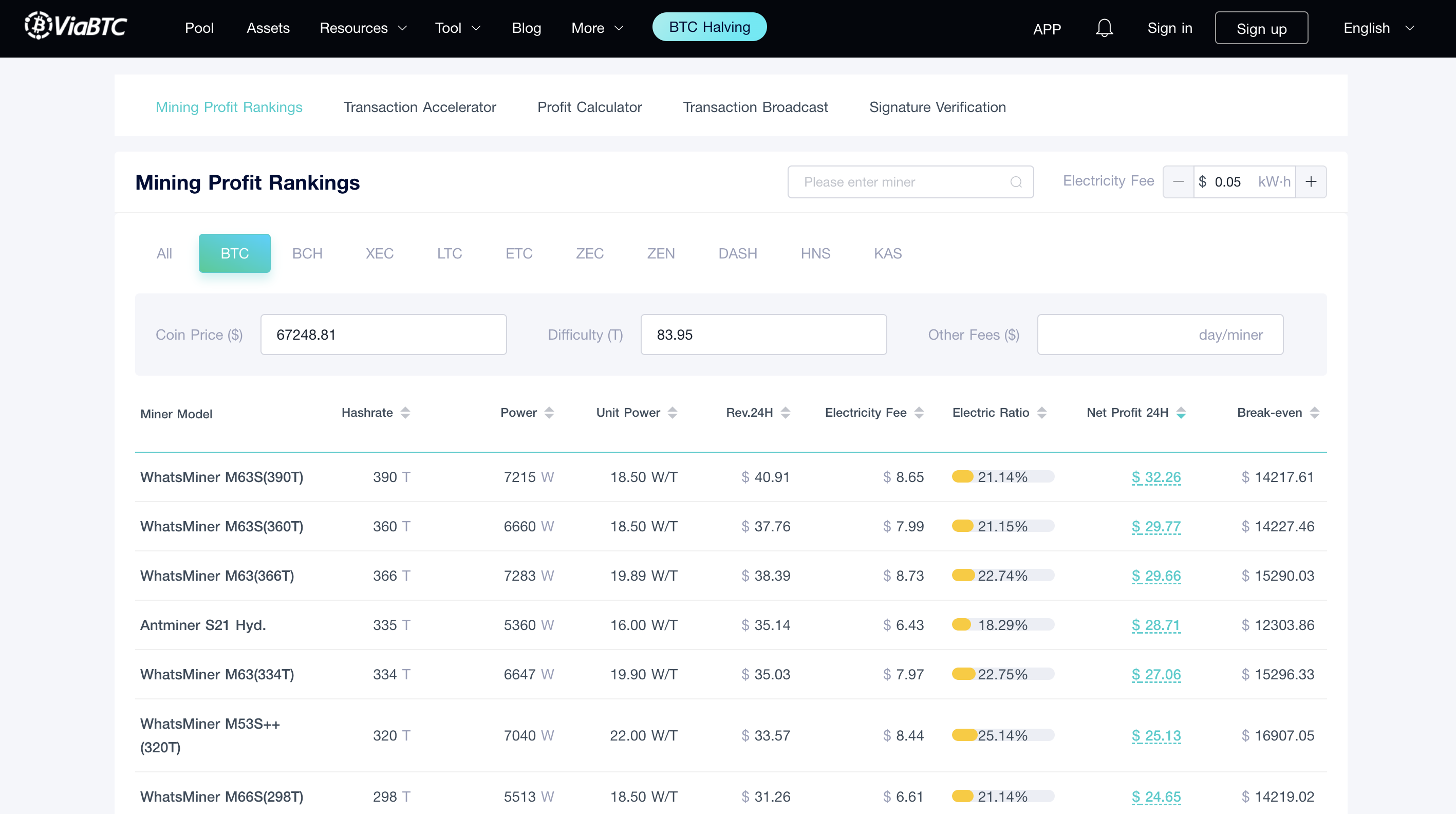Since March, after the Bitcoin price stabilized at the $60,000 mark, it began a continuous climb, successively breaking through the $70,000, $71,000, $72,000 milestones, and reached a new historical record of $73,000 on March 12th. Some views suggest that the recent rise in Bitcoin's price is mainly driven by the influx of billions of dollars into the Bitcoin spot ETF market, while others believe it is influenced by the anticipation of the Bitcoin halving event coming in April.
In any case,, it is good news for Bitcoin market participants, as the price setting a new historical high means that all Bitcoin addresses are currently in a profitable state. At the same time, the rise in Bitcoin's price has also driven an increase in hashprice.

With the Bitcoin halving set to occur in less than 40 days, the continuous rise in hashprice has given miners a "strong boost." The hashprice indicator is an intuitive measure of current mining profitability. According to Hashrate Index data, the current earnings per PH/s of hashrate is $120.04. This month's average hashprice has reached an earnings of $112.31 per PH/s, marking the best performance in nearly a year.
So, how are the earnings of different models of Bitcoin mining rigs currently? Based on the data from the 【Mining Machine Profit Ranking】provided by ViaBTC's official website, we can understand the specific performance of mainstream Bitcoin mining rigs at this stage:
*The following calculations are based on an electricity cost of $0.05/kW·h and the current mining difficulty of 83.95 T.
- WhatsMiner M63S(390T)
Electricity Fee: $8.65
Rev.24H: 0.0006084 BTC
Daily Profit: 0.00048201 BTC
Break-even: $14217.61
- Antminer S21 Hyd.
Electricity Fee: $6.43
Rev.24H: 0.0005226 BTC
Daily Profit: 0.00042865 BTC
Break-even: $12303.86
- WhatsMiner M66S(298T)
Electricity Fee: $6.61
Rev.24H: 0.00046487 BTC
Daily Profit: 0.00036829 BTC
Break-even: $14219.02
- Antminer S21
Electricity Fee: $4.2
Rev.24H: 0.00031199 BTC
Daily Profit: 0.00025062 BTC
Break-even: $13461.96
- Whatsminer M30S+
Electricity Fee: $4.08
Rev.24H: 0.00015599 BTC
Daily Profit: 0.00009638 BTC
Break-even: $26155.52
- Antminer S19
Electricity Fee: $3.9
Rev.24H: 0.00014819 BTC
Daily Profit: 0.00009121 BTC
Break-even: $26317.56

Explore further mining rigs statistics at: 【Mining Machine Profit Ranking】.
The so-called Bitcoin halving means that after every 210,000 blocks are mined, the block reward is halved, continuing until the total BTC supply reaches 21 million. The specific timing depends on the block generation speed of the Bitcoin network, but if the Bitcoin halving event were to happen now, the daily earnings of the aforementioned mining rigs would be halved, and those rigs using 7nm and higher power consumption chips would approach the shutdown price, potentially facing unprofitable situations.
For example, for the Whatsminer M30S+, its daily output will be reduced by half, dropping to 0.000077995 BTC, with its shutdown price coming to $52,311.04. For the Antminer S19, the shutdown price is $52,635.13.
Naturally, the premise behind these calculations is that variables like mining difficulty and the price of Bitcoin stay constant, an assumption far removed from reality.
Firstly, mining difficulty adjusts every 2,016 blocks, and each adjustment directly affects miners' daily output. Taking the most recent Bitcoin difficulty adjustment on March 14th as an example, the average block generation speed was 9 minutes and 27 seconds, with the difficulty increasing by 5.79%. The current average block generation speed is 10 minutes and 48 seconds, and the next difficulty adjustment may decrease. If halving occurs and some miners exit, then after the difficulty adjustment, even less efficient miners may continue to be profitable.
Furthermore, the price of Bitcoin is fluctuating in real-time. Considering historical trends and the current market heat, it is possible for the price of Bitcoin to double after the halving event, if the price climbs to $100,000 or higher. In such a case, miners' profitability is expected to be maintained, or even increase.
Historically, each Bitcoin halving has been a "reshuffle" of the market structure in the mining industry. At this stage, what miners can do is, on one hand, improve the energy efficiency ratio of mining rigs and reduce operating costs, which is key to maintaining profitability. On the other hand, miners also need to closely monitor the fluctuations in Bitcoin prices and adjust their mining strategies accordingly.